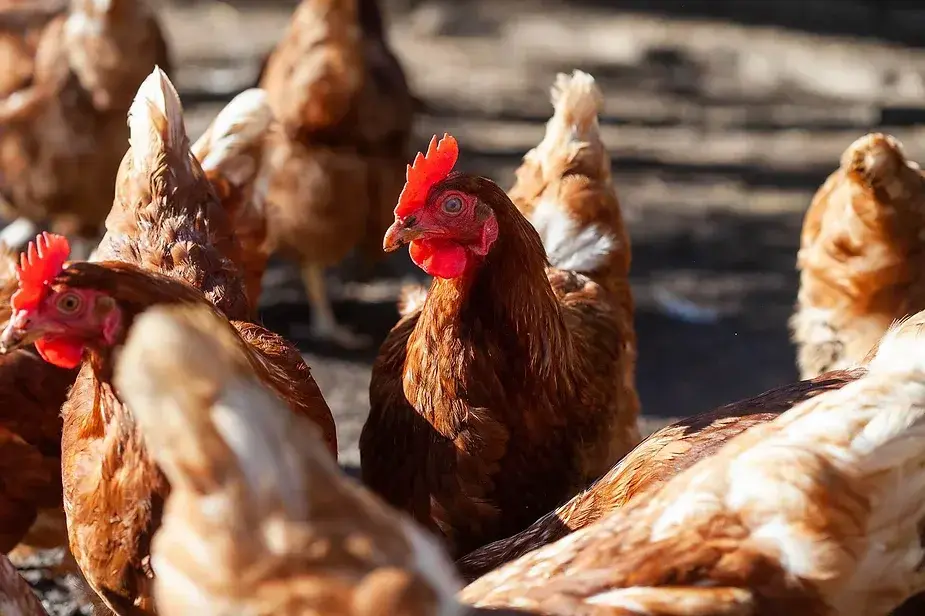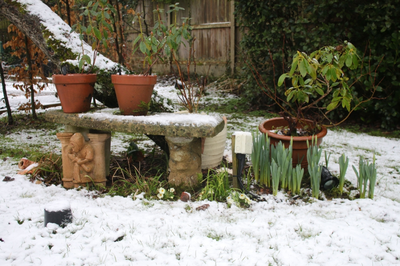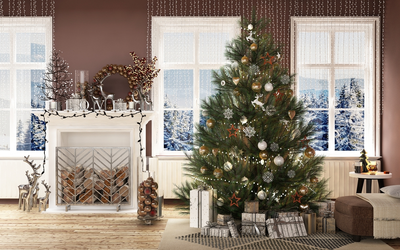
Laying Hens Guide
Housing, lighting, and feeding tips for a successful flock.
Housing:
Hens for a laying flock can be purchased as day old chicks, as pullets at 18-20 weeks of age or as mature laying hens. Good feeding management and light control will help to maintain maximum egg production.
-
Pullets are housed in a layer building at 18-20 weeks of age. (Farm flocks that run loose may not start laying until 24 weeks of age.)
-
Floor space should be 0.2 - 0.3 m (2 – 3 feet) per bird, depending on whether they have an outside run.
-
The layer house should have 10 cm (4 inches) of litter on the floor and adequate feeder and waterer space.
-
Provide one nest box 30x30x30 cm (12”x12”x12”) for each four hens.
-
A temperature range between 7°C to 27°C (45°F to 80°F) is acceptable. In extremely cold weather, supplemental heat may be needed.
Lighting Programs For Layers:
Chickens normally lay between early spring and mid-fall.
Increasing day length (January – June) stimulate egg production; decreasing day length (July – December) inhibits egg production.
Commercial egg producers regulate temperature and lighting to ensure continuous egg production year-round.
Farm Flock:
If the chicken coop has electricity, light bulbs will help to keep it warm in winter and prevent drinking water from freezing.
-
Lighting can also be used to stimulate laying during the winter.
-
Giving the chickens light during the evening or early morning to simulate 14 to 16 hours of sunlight will increase winter production.
Housed Layers with Runs:
Lighting control can be used to increase egg production. The most important considerations are:
-
Maintain a constant day length for growing pullets.
-
Never decrease day length or light intensity for laying hens.
-
A general lighting program is to raise pullets on a constant day length of 10 hours of light per day.
-
When the pullets are old enough to lay (usually 18 – 20 weeks of age), the day length is gradually increased up to 16 hours of light per day.
Lighting: Housed Layers:
For maximum egg production, lighting can be used to control the birds sexual maturity, behavior and rate of production.
-
Start chicks at 24 hours of light for 3 – 7 days. After the chicks have found feed and water, reduce the light to 16 hours.
-
Up to 3 weeks of age, gradually decrease the light to 10 hours per day. Maintain 10 hours of light until the pullets are large enough to lay (usually 18-20 weeks), and then begin to increase the day length.
-
Increase the light 30 minutes each week until there is 16 hours of light. Maintain a constant day length of 16 hours.
-
If the light period is decreased, egg production will drop.
-
Automatic timing devices to turn the lights on and off are available and recommended.
Feeding Program:
Laying Rations should feed free choice as the only feed in order to maximize egg production.
-
Laying pellets fed alone provide a complete diet with a sufficient amount of calcium. Laying hens need calcium to keep the shells thick.
-
If laying pellets are combined with other whole grains, the levels of vitamins and minerals, including calcium, will be diluted.
-
Oyster shell can be offered free choice or sprinkled over the feed for additional calcium.
Have more questions? Visit your local Buckerfield's and we'll be happy to help!



